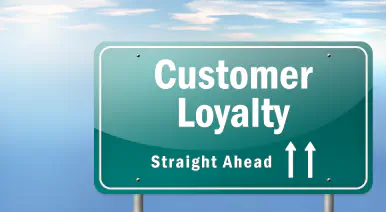The Value of Surveying Employees and Customers
When you go into the office tomorrow, look around. How many employees appear to be engaged in their work? And, how many employees appear to be there just to get a paycheck? How do you know? At the other end of the continuum, if someone were to ask you how many of your customers are satisfied, would you have a reliable estimate? Again, how would you know?
Some organizations gather information from their employees in an annual questionnaire. Some organizations send emails to find out if customers received a delivery on time or call key customers to detect their level of satisfaction with provided services or products.
Few organizations, however, gather information from both their employees and their customers with any regularity. And, even fewer organizations do anything with the information, once gathered. Granted, this takes time and money, always scarce commodities. But not gathering this information about employee engagement and measuring customer satisfaction from these two important stakeholders could cost your organization even more time and money in the long run.
Depending on whom you read, the range of disengaged employees across organizations is believed to be anywhere from 50% to 80% of employees in the workplace. Dale Carnegie estimates that companies collectively lose about $350 billion a year due to low employee engagement. Disengaged employees impact business productivity, levels of innovation, employee morale and, ultimately, the bottom line.
On the flip side, a key finding by the Forum for People Performance Management and Measurement, a research center in the Medill Integrated Marketing Communications graduate program at Northwestern University, is that organizations with engaged employees have customers who use the company’s products and services more often and with higher satisfaction than customers of companies with disengaged employees.
“Today’s employees add value, innovating, problem solving and improvising to meet customers’ needs“, notes Kenneth Thomas, author of Intrinsic Motivation at Work: What Really Drives Employee Engagement. “Engaged employees show initiative, choose to do things right, and are committed to making meaningful contributions to the organization.”
Employee engagement has many definitions and descriptions across industries. William H. Macey, CEO of Valtera Corporation and Benjamin Schneider, Senior Research Fellow at Valtera have written about three common threads of employee engagement in Industrial and Organizational Psychology.
The first thread of employee engagement reflects people’s predisposition to be conscientious, proactive, enthusiastic – to approach work with a positive attitude. Macey and Schneider refer to this as Disposition or Trait Engagement, which suggests that certain individuals are naturally engaged at work due to their inherent personality.
Second, employee engagement is described in terms of the internal drive, commitment, and feeling of involvement felt by some people on the job; people who feel empowered. Macey and Schneider refer to this as State Engagement and suggest that this state is influenced by the work environment, including job variety, level of autonomy, management style, and overall practices in human resources.
The third thread of employee engagement reflects employee behaviors of adaptation and of personal initiative to go above and beyond what is expected of them on the job. Macey and Schneider refer to this as Behavioral Engagement.
Overall, employee engagement tends to be fostered by challenging work goals and positive feedback, appreciation, and recognition by organization managers and leaders. Employees need to feel free to communicate upwards as well as horizontally and downward in the organization chain of command. Engaged employees feel respected and valued; they feel that their contribution is important. They stay for what they give and feel an emotional bond to the organization for which they work.
In fact, Robert J Vance, partner of Vance & Renz, LLC, has identified the following ten common themes that organizations should attend to when gathering information about employee engagement: pride in employer, satisfaction with employer, job satisfaction, opportunity to perform well at challenging work, recognition and positive feedback for one’s contributions, personal support from one’s supervisor, effort above and beyond the minimum, understanding the link between one’s job and the organization’s mission, prospects for future growth with one’s employer, and intention to stay with an employer.
The Northwestern University study looks at several of these common themes. Data was obtained from a stratified random sample of 100 organizations in the U.S. media industry; 5,568 employees representing 90 of the 100 organizations completed the Organizational Effectiveness Inventory. The scales for employee engagement related to employee perspectives on the following dimensions: inspiration, personal involvement, and supportiveness.
The overall study looked at types of organizational cultures (e.g., cooperative, competitive, passive, aggressive), organizational climates (communication, managerial facilitation, and job design), human resource systems (e.g. selection, development, performance management, compensation) and market measures (e.g., organization size, market size, market competition).
One of the key findings was that employee satisfaction is a significant antecedent to employee engagement while managerial facilitation, job design, cooperative culture, and competitive culture were also positive predictors of employee engagement.
Certainly the process of building an engaged workforce begins with human resource practices including the job design, recruitment, selection, onboarding and subsequent training, compensation, performance management, and professional development. As shown by Macey and Schenider, an individual’s knowledge, skills, and attitudes impact work behaviors, which collectively contribute to products and services that make an organization successful, or not.
Software giant Intuit found that highly engaged employees are 1.3 times more likely to be high performers than less engaged employees. They are also five times less likely to voluntarily leave the company. If Intuit had not committed the resources necessary to gather information from its employees, how would they have learned about these important statistics which have implications for their bottom line?
“The difference with leading organizations is that they don’t just regard collecting employee data as exercises. Leaders take accountability for responding to the employee feedback,” notes Jenny Merry, engagement practice leader at a United Kingdom consulting practice. “In these organizations, human resources plays a supporting role and leaders take accountability for action as they understand the positive impact this will have on their financial performance.”
Employees who are engaged in their work and committed to their organizations give companies crucial competitive advantages which include high productivity and low employee turnover. It is not surprising that organizations that invest in surveying employees implement practices that foster employee engagement.
In a BusinessWeek article on the best measures of an organization’s health, former General Electric CEO Jack Welch identified employee engagement as the best first measure of a company’s health with customer satisfaction and free cash flow as second and third runners up.
The importance of customer satisfaction in sustaining business operations is certainly not new. But, customer service has taken center stage as a growth strategy in recent years. According to In Service Economics, researchers note that it is not unrealistic to expect sales increases of 20% or more of total company revenue by promoting staff as trusted advisors delivering excellence in customer service.
When customer satisfaction ratings are low, there are usually underlying problems that will impact service, product sales, and profitability.
Thompson Morrison, CEO of FUSE Insight, is a proponent of the net promoter score as a way to uncover customer satisfaction and to validate company efforts related to customer satisfaction and loyalty. Customers are surveyed and asked how likely it would be that they would recommend the company to a friend or colleague. Customers respond using a 0-10 scale, where 0 is least likely and 10 is most likely to recommend. Customers who indicate a 9 or 10 are ‘promoters’, those who indicate a 7 or 8 are ‘passives’; the rest are ‘detractors’.
The net promoter score is then calculated by taking the percentage of all respondents who are promoters and subtracting the percentage of all respondents who are detractors. Morrison cautions, however, that the net promoter score alone is meaningless without knowing why customers responded the way that they did. Each rating query must include a follow up question asking why customers love (or not) the product, service, or organization.
Information without understanding why will neither help the organization understand the root cause nor identify strategies for change. The ‘why’ question provides the golden nugget of information required to induce change within organizational operations and support organizations in more effectively managing their business.
The ability of any business to meet its customers wants and needs, and anticipate and exceed them, results in excellent customer satisfaction, or lack thereof. Today’s customers are savvy consumers who want and expect superior service.
“It’s important to see customer service as an investment, not a cost,” said Jim Bush, Executive Vice President, World Service. “The Internet has made service quality more transparent than ever before. Each and every service interaction a company has with its customers is even more crucial. Developing relationships with customers, listening to them, anticipating their needs, and resolving any issues quickly and courteously can help make the difference.”
Michelli notes that employees must feel empowered to take the customer’s experience to a higher level by making decisions that benefit the customer, and ultimately the company. This could involve an employee approaching unusual customer requests with a ‘how will we do this’ instead of a flat ‘yes’ or ‘no’.
The way in which an employee responds to a customer request has a significant impact on customer satisfaction. Research indicates that if an employee is engaged, there is a high likelihood that the customer will be satisfied.
Organizations that focus on their customers tend to look at customer satisfaction as a meaningful component of continuous process improvement. When information is gathered from customers from those within the organization or in collaboration with experts outside of the organization, company leaders must work together with managers to fully understand the issues, identify key drivers of customer satisfaction and dissatisfaction, and act on that information.
Xerox found that customers who rated them a five instead of a four on a five-point satisfaction scale were six times more likely to buy more products. This indicates the importance of measuring customer satisfaction and the importance of distinguishing between degrees of satisfaction.
Customers are driven by their needs and judge businesses based upon their perceptions as customers. It’s no longer enough to think that your organization is doing a good job. You must know your organization is doing a good job by constantly gathering and monitoring feedback from your employees and your customers.
The value of measuring engaged employees and satisfied customers is priceless. Successful organizations incorporate results of employee engagement and customer satisfaction questionnaires directly into action plans and process improvement initiatives.
Companies monitor changes in employee behaviors and attitudes from year to year and compare themselves to benchmarks in their industry. Some organizations require that all managers with direct reports have performance objectives related to employee engagement and customer satisfaction.
Other organizations feed information from employee and customer surveys to the appropriate individuals for prompt action. Feedback from employee and customer surveys is also used for training and professional development.
Successful organizations understand that employees have a direct effect on customer attitudes and behaviors. Employers should direct their energy towards managing these attitudes and behaviors of their employees. What better reasons to gather information from both employees and customers than to identify levels of employee engagement and customer satisfaction? And remember, what gets measured, tends to get managed!
If you would like to learn more about how NBRI can work with you to measure employee engagement and customer satisfaction, please contact us at 800-756-6168.
Terrie Nolinske, Ph.D.
Research Associate
National Business Research Institute




























 By submitting this form you agree to our
By submitting this form you agree to our